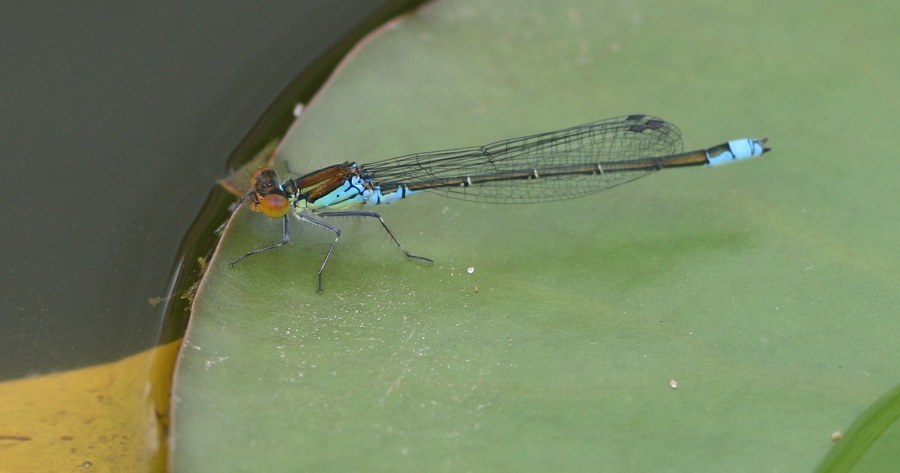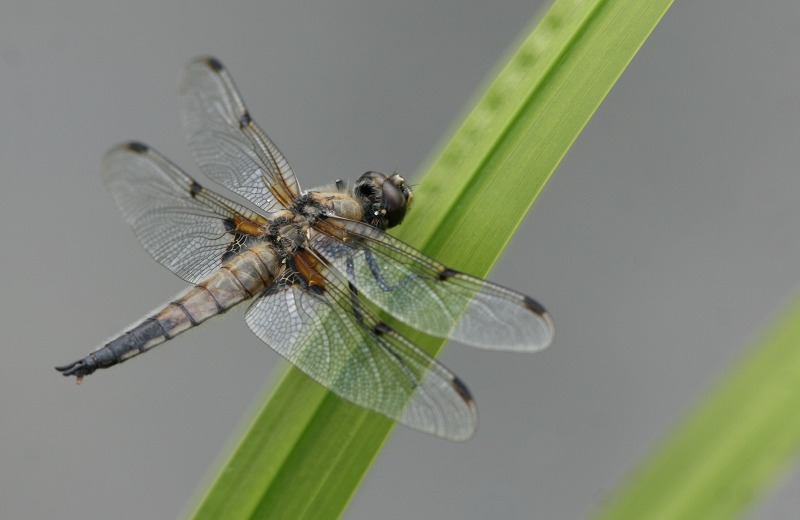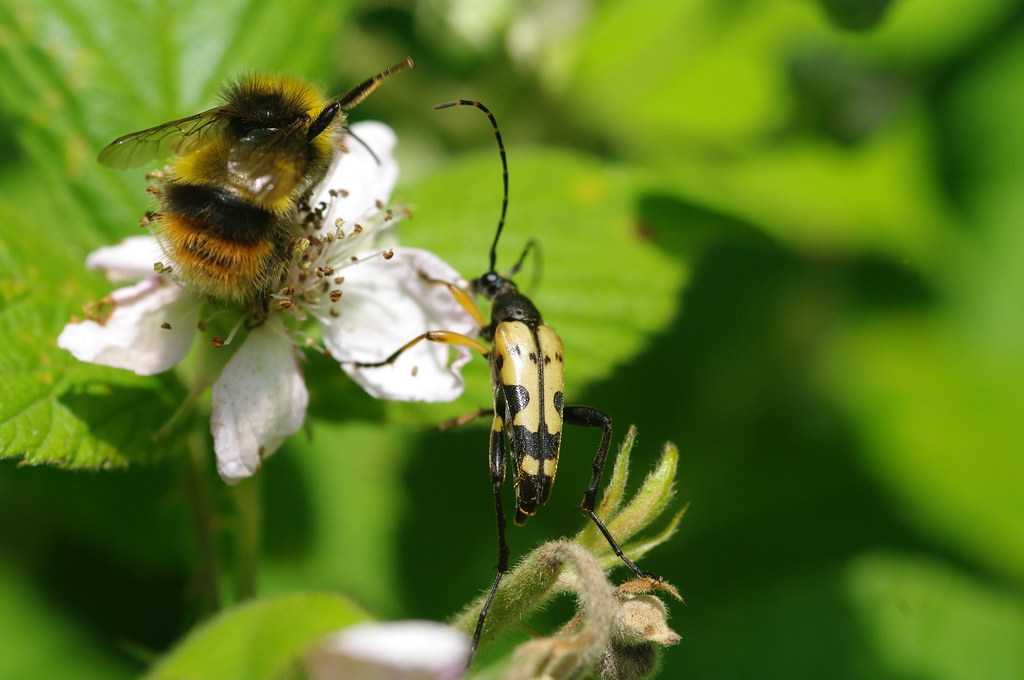
Will probably fly tomorrow, 29 days after egg laid.
(p.s. It did. Was ready to go by 7am - released into the warm morning sunshine)
Photo by Keith Balmer
 The antehumerals are right for Variable, but the black U mark at the base of the abdomen and cup mark at the tip clearly make it an Azure...
The antehumerals are right for Variable, but the black U mark at the base of the abdomen and cup mark at the tip clearly make it an Azure...... but the cup mark can sometimes be severely reduced on Azure, as this individual shows:
Also got a nice Large Skipper: ... which turned out to be almost a mirror image of my previous best Large Skip shot, in an identical pose on the same leaf (Bramble?) but facing left.
... which turned out to be almost a mirror image of my previous best Large Skip shot, in an identical pose on the same leaf (Bramble?) but facing left.
...and a female Meadow Brown. These always seem to look out-of-focus - I think they just have a blurry wing pattern. The previous weekend I spent a Sunday of reasonable weather checking Wilstead Wood for (non-present and probably long locally extinct) Wood White, and Tiddenfoot for (again absent) Downy Emerald, but got a pair of Common Blue Damsels in cop:
The previous weekend I spent a Sunday of reasonable weather checking Wilstead Wood for (non-present and probably long locally extinct) Wood White, and Tiddenfoot for (again absent) Downy Emerald, but got a pair of Common Blue Damsels in cop:














Orange-tailed (Synanthedon andrenaeformis) also from my garden 15.06.09
Red tipped (Synanthedon formicaeformis) from beside River Ivel Navigation, Clifton
 Bombus pratorum sharing a flower with a longhorn (Rutpela maculata)
Bombus pratorum sharing a flower with a longhorn (Rutpela maculata)

 A fresh male (rather than female – slenderer abdomen and no black on wingtips) Scarce Chaser at Wyboston:
A fresh male (rather than female – slenderer abdomen and no black on wingtips) Scarce Chaser at Wyboston: …and a Holly Blue also there:
…and a Holly Blue also there: Green Hairstreak and Duke of Burgundy from Bison Hill:
Green Hairstreak and Duke of Burgundy from Bison Hill:
 …this one unfortunately hiding its feet and antennae tips.
…this one unfortunately hiding its feet and antennae tips. …and a couple of upperwings:
…and a couple of upperwings:
 Some Large Red Damselflies (from Stewartby and Felmersham), a male:
Some Large Red Damselflies (from Stewartby and Felmersham), a male: …a normal female:
…a normal female: …and a rufescens female:
…and a rufescens female: A couple of Azure Damselflies (also Stewartby and/or Felmersham):
A couple of Azure Damselflies (also Stewartby and/or Felmersham):
 Orange Tip underwing and upperwing, also at Felmersham:
Orange Tip underwing and upperwing, also at Felmersham:
 … and finally a teneral Broad-bodied Chaser, again at Felmersham:
… and finally a teneral Broad-bodied Chaser, again at Felmersham: